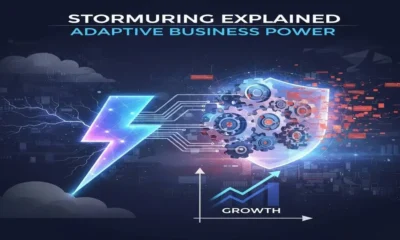GENERAL
How to Turn Gatekeepers into Allies in Cold Calling

Cold calling success often hinges on reaching decision-makers, but before that can happen, sales professionals must navigate an essential challenge: the gatekeeper. These individuals, whether executive assistants, receptionists, or office managers, serve as the first line of defense, screening calls and filtering access to key decision-makers.
Many cold callers view gatekeepers as obstacles, but a better approach is to see them as potential allies. Winning over a gatekeeper not only increases the chances of getting through to the decision-maker but also lays the groundwork for a smoother, more receptive conversation when that connection is made.
This article explores how sales professionals can turn gatekeepers into valuable allies, using proven strategies to build rapport, establish credibility, and ultimately gain access to decision-makers.
Understanding the Role of the Gatekeeper
Gatekeepers are not just barriers to entry; they play an essential role in protecting their employer’s time and ensuring that only relevant calls reach them. Approaching gatekeepers with respect and strategic communication can shift the interaction from resistance to cooperation.
Common Types of Gatekeepers:
- Executive Assistants: Manage schedules and prioritize their boss’s workload.
- Receptionists: Handle inbound calls and direct them accordingly.
- Office Managers: Oversee company operations and have authority over communication access.
Each of these individuals has influence over whether a call gets passed along, making it essential to approach them strategically.
The Right Mindset: From Adversary to Advocate
The first step in handling gatekeepers effectively is changing how they are perceived. Instead of seeing them as roadblocks, recognize them as valuable contacts who can provide insight and access. A positive attitude and a respectful approach increase the likelihood of turning an initial rejection into a future opportunity.
Key Mindset Shifts:
- View gatekeepers as facilitators, not obstacles.
- Build a relationship rather than trying to bypass them.
- Position yourself as someone offering value, not just selling a service.
Strategies for Winning Over Gatekeepers
1. Sound Confident and Professional
First impressions matter. How a caller introduces themselves can determine whether they are taken seriously or brushed off.
Best Practices:
- Speak clearly and confidently.
- Avoid filler words like “um” or “uh.”
- Use a professional, upbeat tone that conveys authority without being aggressive.
Example:
“Good morning, this is [Your Name] from [Company Name]. I’m hoping to connect with [Decision-Maker’s Name] regarding [specific business solution].”
2. Build Rapport with the Gatekeeper
Gatekeepers deal with cold calls all day, and many of them are used to dismissing unimportant ones. However, if a caller makes an effort to build rapport, they can change the tone of the conversation.
Ways to Build Rapport:
- Use their name when speaking.
- Ask how their day is going before jumping into the request.
- Show appreciation for their role and acknowledge their responsibility.
Example:
“I imagine you get a ton of calls like this! I appreciate you taking a moment to speak with me.”
3. Give a Clear and Relevant Reason for Calling
Generic pitches are easily dismissed. Being direct and offering a compelling reason for the call increases the chances of being connected.
What to Avoid:
- Overly vague statements like “I just wanted to introduce myself.”
- Sounding too scripted or robotic.
- Asking, “Is [Decision-Maker] available?” without context.
Stronger Approach: “I’m reaching out because we’ve helped similar companies improve their [specific business process], and I believe this could be beneficial for [Decision-Maker’s Name] as well.”
4. Position the Call as an Important Matter
Gatekeepers prioritize calls based on perceived importance. If a call seems urgent or directly beneficial to the decision-maker, it’s more likely to be forwarded.
Techniques to Establish Importance:
- Mention a relevant business issue.
- Highlight a timely opportunity.
- Reference a connection or referral if applicable.
Example:
“[Decision-Maker’s Name] recently spoke about streamlining operations at your company, and I’d love to share insights that have helped others in the industry.”
5. Respect the Gatekeeper’s Authority
If a gatekeeper is in charge of filtering calls, they will not respond well to pushy or dismissive behavior. Acknowledging their role and treating them with respect increases cooperation.
What to Say:
“I completely understand that [Decision-Maker] has a busy schedule. Would you be able to recommend the best time for me to reach them?”
Handling Common Gatekeeper Responses
Even with the best approach, gatekeepers often have pre-set responses to filter out sales calls. Here’s how to respond effectively.
1. “They’re not available right now.”
- Response: “I understand! When would be a better time to follow up?”
2. “Can you send some information via email?”
- Response: “I’d be happy to! To ensure it’s relevant, may I ask what specific challenges [Decision-Maker] is focused on?”
3. “They don’t take sales calls.”
- Response: “I completely understand. Would you be able to point me in the direction of the best person to discuss this with?”
Follow-Up Strategies After the First Call
Even if the initial attempt to reach a decision-maker isn’t successful, persistence and follow-up can lead to a breakthrough.
1. Leverage Multiple Touchpoints
If a call doesn’t go through, follow up via:
- Email, referencing the initial call.
- LinkedIn connection requests with a personalized note.
- A second phone call at a different time of day.
2. Keep the Gatekeeper in the Loop
If a gatekeeper becomes familiar with the caller, they’re more likely to help in future interactions.
Example:
“I spoke with you last week regarding [Decision-Maker’s Name], and I appreciate your help. I wanted to follow up as we discussed.”
3. Time Follow-Ups Strategically
- Calling at different times of the day can increase the chance of reaching the decision-maker.
- Varying follow-up methods prevents the approach from feeling repetitive.
Final Thoughts
Cold calling is as much about strategy as it is about persistence. By viewing gatekeepers as allies rather than obstacles, sales professionals can improve their success rate and make each call more productive.
No Accent Callers understands that turning gatekeepers into allies requires patience, respect, and well-crafted communication. By mastering this approach, sales teams can navigate cold calling more effectively and build stronger business relationships.
-

 BIOGRAPHY5 months ago
BIOGRAPHY5 months agoBehind the Scenes with Sandra Orlow: An Exclusive Interview
-

 HOME12 months ago
HOME12 months agoDiscovering Insights: A Deep Dive into the //vital-mag.net blog
-

 HOME1 year ago
HOME1 year agoSifangds in Action: Real-Life Applications and Success Stories
-

 BIOGRAPHY12 months ago
BIOGRAPHY12 months agoThe Woman Behind the Comedian: Meet Andrew Santino Wife




























